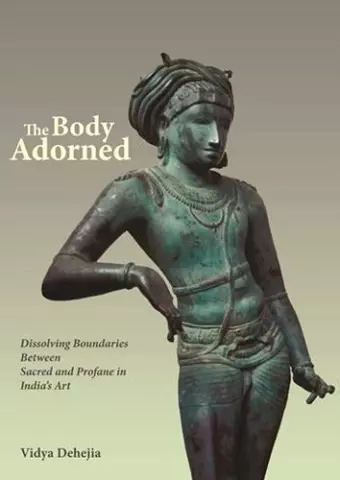The Body Adorned
Sacred and Profane in Indian Art
Format:Hardback
Publisher:Columbia University Press
Published:13th Mar '09
Currently unavailable, and unfortunately no date known when it will be back

This book is very well conceived, and Dehejia is a major scholar with a fine track record in scholarly yet accessible writing. The study's particular merit lies in the fact that Dehejia brings her sensitivity to the integral connections between verbal and visual imagery in Indian aesthetics, to the linkages among a variety of Indian arts, and to a holistic vision of the culture in which these arts flourish. -- Indira Peterson, Mount Holyoke College The rich adornment of the human body is everywhere in Indian culture--and nowhere in Indian scholarship.Vidya Dehejia has finally addressed this deficiency with a perceptive and illuminating book sure to be of interest to students of literature no less than art history. -- Sheldon Pollock, The William B. Ransford Professor of Sanskrit and Indian Studies, Columbia University One of those things we rarely address in the study of Indian art is the sensual body, which, as this book so effectively shows, is central to the conception of the figure. Controlling multiple languages--Sanskrit, Tamil, Telugu, and Kannada--as well as a vast array of Indian literature from inscriptions to poetry to texts on the arts and aesthetics, Vidya Dehejia explores the well-formed body in India's visual arts and the metaphors used to describe and understand it. After reading this book, I cannot imagine looking at the Indian sculptured or painted figure as I'd previously viewed it. -- Rick Asher, University of Minnesota An accessible, thoughtful inquiry into several crucial questions in the study of Indian art. Vidya Dehejia argues that the sensuous anthropomorphic form occupies a fundamental position in the Indian artistic imagination, and she confirms this persuasively through both visual and literary sources. One great virtue of this work lies in its synthesis of art, literature, and cultural materials, providing a rich cultural context for the understanding of Indian art. -- Richard H. Davis, professor of religion and Asian studies, Bard College
The sensuous human form-elegant and eye-catching-is the dominant feature of premodern Indian art. From the powerful god Shiva, greatest of all yogis and most beautiful of all beings, to stone dancers twisting along temple walls, the body in Indian art is always richly adorned. Alankara (ornament) protects the body and makes it complete and attractive; to be unornamented is to invite misfortune. In The Body Adorned, Vidya Dehejia, who has dedicated her career to the study of Indian art, draws on the literature of court poets, the hymns of saints and acharyas, and verses from inscriptions to illuminate premodern India's unique treatment of the sculpted and painted form. She focuses on the coexistence of sacred and sensuous images within the common boundaries of Buddhist, Jain, and Hindu "sacred spaces," redefining terms like "sacred" and "secular" in relation to Indian architecture. She also considers the paradox of passionate poetry, in which saints praised the sheer bodily beauty of the divine form, and nonsacred Rajput painted manuscripts, which freely inserted gods into the earthly realm of the courts. By juxtaposing visual and literary sources, Dehejia demonstrates the harmony between the sacred and the profane in classical Indian culture. Her synthesis of art, literature, and cultural materials not only generates an all-inclusive picture of the period but also revolutionizes our understanding of the cultural ethos of premodern India.
An important work for anyone interested in Indian art or religion... Highly recommended. Choice
ISBN: 9780231140287
Dimensions: unknown
Weight: unknown
219 pages